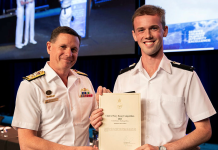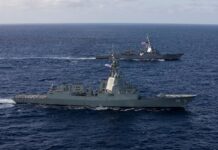China plans base station for rescue operations in South China Sea
A Chinese government bureau is planning a base station for an advanced rescue ship in the disputed Spratly Islands, Chinesee media reports, as China continues its push to develop civilian and military infrastructure in the contentious region.
The ship, which would carry drones and underwater robots, is set to be deployed in the second half of the year, said Chen Xingguang, political commissar of the ship, which is under the South China Sea Rescue Bureau of the Ministry of Transport, according to the official China Daily. The civilian bureau has 31 ships and four helicopters conducting rescue missions in the South China Sea, and officials from the department told the China Daily they work with the military on such efforts
Officials said the rescue ship base station would enable rescue forces to aid fishing boats in trouble, and shorten the distance they need to travel. It is unclear on which island the ship will be based, but China has carried out land reclamation and construction on several islands in the Spratly Archipelago, parts of which are also claimed by the Philippines, Vietnam, Brunei, Malaysia and Taiwan.
In the East China Sea, Beijing’s Big Ships Push the Envelope
In the East China Sea, tension is quietly and steadily mounting into a potentially dangerous cocktail of disputed islands, feverish nationalism, and well-armed adversaries.
China has begun sailing bigger ships — old navy vessels nominally now serving as Coast Guard ones — near islands that Beijing and Tokyo both claim, as well as carrying out provocative flights with advanced jets overhead. Those aggressive tactics have alarmed Japan and raised the risk of a potentially violent incident between the two — and unlike in the South China Sea, where the United States has been vague about its readiness to help the Philippines in a dispute with Beijing, Washington has made clear it will honor its treaty obligations to come to Japan’s rescue.
Japan, after decades of indifference and official pacifism, is flexing its military muscles and showing a determination to counter Beijing’s attempts to assert its territorial claims. Tokyo is investing record levels in its military, especially the navy, building up amphibious forces, bolstering missile defenses, buying stealthy F-35 fighter jets, and increasingly taking part in big military exercises with the United States and other countries.
Source : foreignpolicy
US Navy maneuvers near Philippines seen as show of force against China
By Jason Pan / Staff reporter
The current mission by the US aircraft carrier USS John C. Stennis in the South China Sea, with its port visits to the Philippines over the weekend (28-29 May 2016), is a clear show of force by the US military aimed at deterring China from making hostile moves, some observers said.
The Nimitz-class carrier docked in Manila on Saturday, after visiting Subic Bay on Friday, the day President Tsai Ing-wen was inaugurated in Taipei. “The presence of Stennis and its escort ships bring stability to the region, and sends out a strong message for China not to make any injudicious moves in the meantime,” said William Sharp, a visiting US research fellow at Academia Sinica in Taipei.
The Stennis is being escorted through by its own carrier strike group of two guided-missile destroyers (the USS Stockdale, USS William P. Lawrence and USS Chung-Hoon), and the cruiser USS Mobile Bay. Military experts said the Stennis and its strike group were operating in the northern sector of the South China Sea in the past few days, in sea lanes adjacent to the Philippines and in close proximity to Taiwan. Although in official US pronouncements, the Stennis has been on a regular scheduled US 7th Fleet deployment since March 31 for routine patrols at sea, the Navy Times newspaper reported on March 4 that Washington was sending a “small armada” to the South China Sea as a show of force amid China “militarizing the region to guard its excessive territorial claims.”
Taiwanese political pundits said that Washington sending the carrier and its escort to patrol in waters near Taiwan last week was a strong signal to China, warning it against making any military provocations as Taiwan’s new president assumed office.
Source : Taipeitimes
China confirms its warships to join major U.S.-hosted naval drills (RIMPAC)
China’s navy will send five ships to join a major U.S.-hosted naval drill this summer, even as tension mounts between the world’s two largest economies over the South China Sea.
The Rim of the Pacific exercise, or RIMPAC, billed as the world’s largest international maritime exercise, is held every two years in Hawaii in June and July. Critics of the Obama administration, including U.S. Senator John McCain, have said the United States should bar China from the drills to show U.S. disapproval of its military actions. The United States and its allies have expressed growing concern over the Asian giant’s military build-up, as well as its increasingly assertive posture in the South China Sea.
China’s Defence Ministry, in a short statement late on Thursday, said its flotilla, including two warships and a hospital ship, would participate in live fire, anti-piracy, search and rescue and other drills. Despite China’s anger at U.S. military patrols close to islands China controls in the South China Sea, and U.S. criticism of China’s military build-up, both countries have been trying to improve defence ties and ensure regular communications.


